Literature Sharing | Fertigation with alpha-tocopherol enhances morphological, physiological, and antioxidant responses in radish (Raphanus sativus L.) under drought stress
Release time:
2025-05-27
This study aimed to investigate the potential role of alpha-tocopherol (α-Toc), a form of vitamin E, in improving morphological, physiological, biochemical, and cellular antioxidant responses in two radish genotypes under drought stress (38 ± 3% field capacity). Four treatments were applied: T0 (Control), T1 (Control + α-Toc), T2 (Drought), and T3 (Drought + α-Toc), with three replications. Drought stress significantly reduced growth traits such as root length, shoot fresh weight, and shoot dry weight. However, the application of α-Toc (alone or in combination with drought) significantly improved these growth parameters. Drought also increased hydrogen peroxide and lipid peroxidation levels, but α-Toc application mitigated oxidative damage by enhancing antioxidant enzymes (CAT and POX), reducing lipid peroxidation, and increasing osmolytes like total soluble proteins to maintain osmotic balance. Moreover, α-Toc enhanced photosynthetic pigments and activity, particularly in the Early Milo (G2) genotype, leading to better water use efficiency, transpiration rate, and stomatal conductance. It also promoted the accumulation of beneficial inorganic ions (K⁺, Ca²⁺, and PO₄³⁻) in shoots. Overall, the findings suggest that α-Toc effectively alleviates drought stress and promotes plant growth under such conditions.
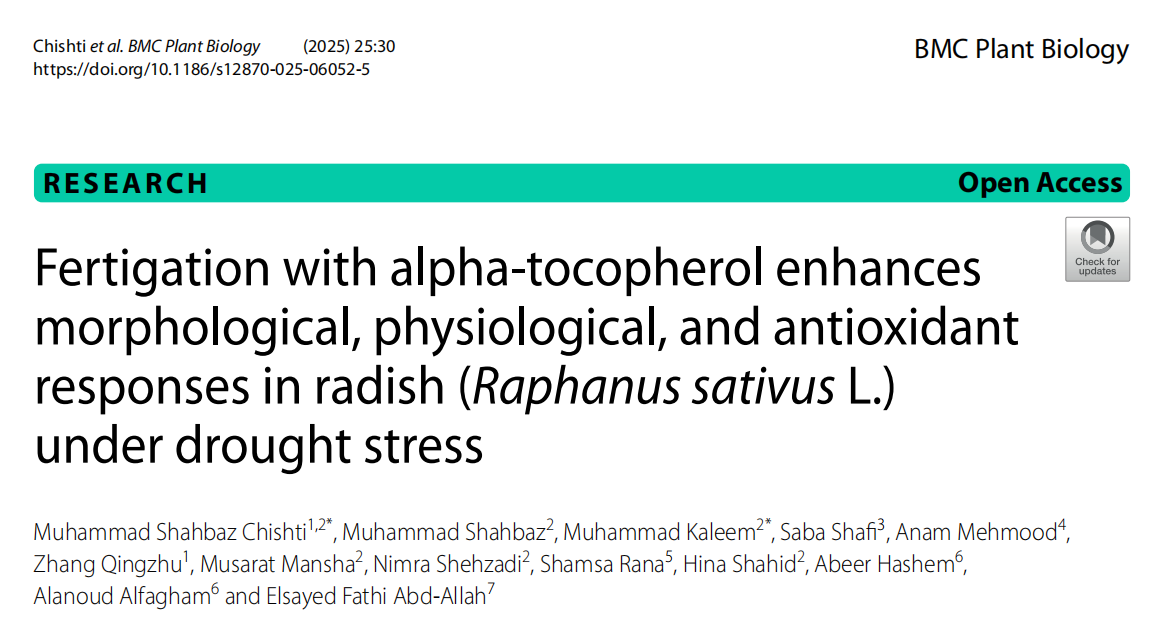
Drought stress significantly reduced root length, shoot fresh weight, and shoot dry weight in both radish genotypes. However, α-tocopherol application (both alone and with drought) significantly improved these growth traits, with the most pronounced increases observed under non-stress (control) conditions.
Drought stress increased hydrogen peroxide (H₂O₂) and lipid peroxidation (LPX) levels while reducing total soluble proteins (TSP) in both radish genotypes. However, α-tocopherol application, both alone and combined with drought, significantly reduced H₂O₂ and LPX levels, enhanced antioxidant enzyme activities (CAT and POX), and restored TSP levels. These results suggest that α-Toc helps mitigate oxidative damage and improves stress tolerance in radish under drought conditions.
Drought stress led to a significant reduction in photosynthetic pigments (Chl a, Chl b, total chlorophyll, and carotenoids), especially in the G1 genotype. However, α-tocopherol application (under both normal and drought conditions) improved chlorophyll and carotenoid levels in both genotypes.
Regarding shoot ion content, drought reduced K⁺, Ca²⁺, and PO₄³⁻ levels, while α-Toc application enhanced their accumulation, with G2 (Early Milo) showing a more pronounced response.
Photosynthetic traits such as net CO₂ assimilation (A), transpiration rate (E), and stomatal conductance (gs) were also reduced by drought but significantly improved by α-Toc treatment, particularly in G2. Additionally, α-Toc enhanced water use efficiency (A/E) under drought conditions in both genotypes.
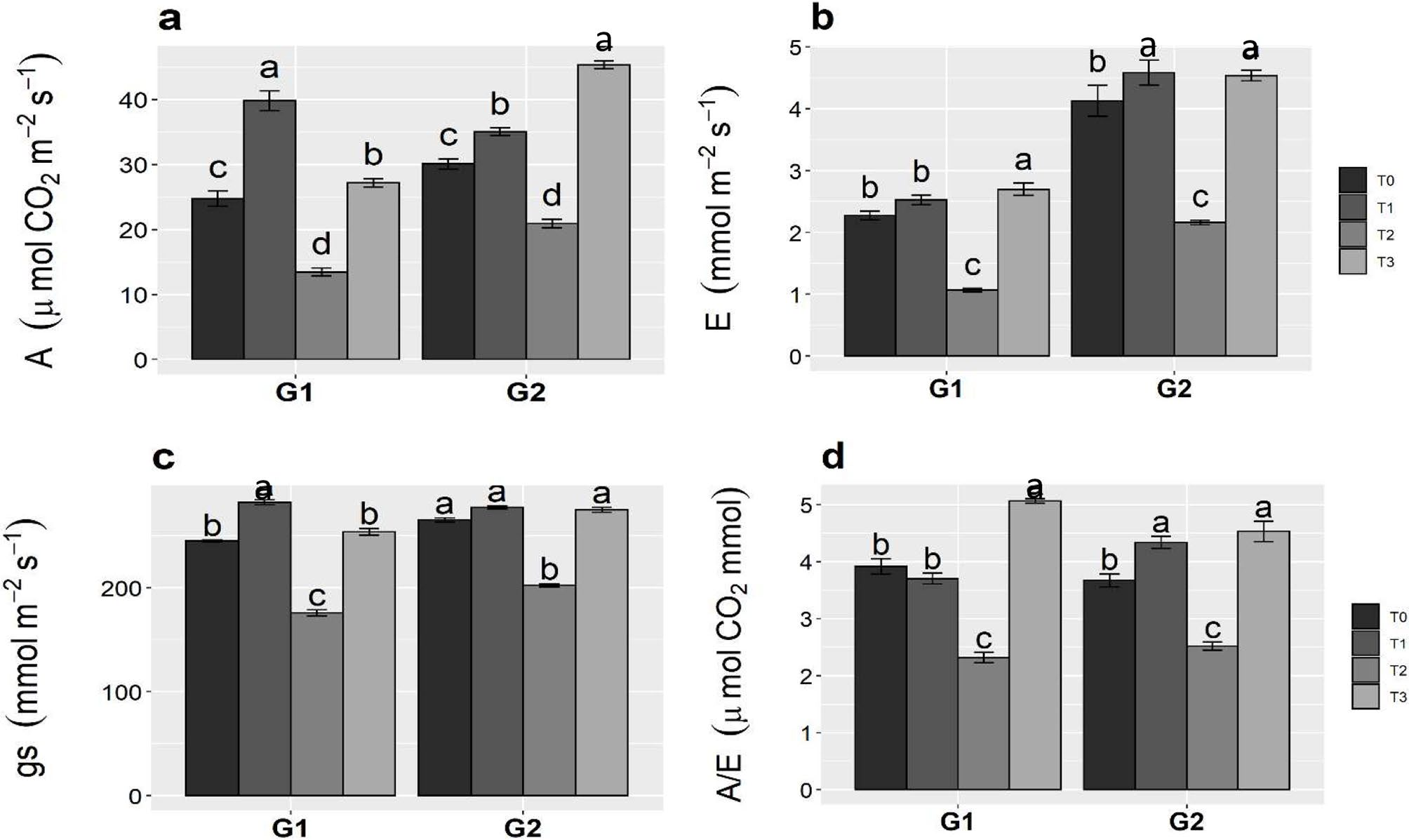
Fig. 1 Applications of α-tocopherol on gaseous exchange traits of two radish genotypes under control and water deficit conditions.
Principal Component Analysis (PCA) revealed that α-tocopherol (α-Toc) significantly influenced growth, photosynthetic traits, osmolytes, ROS, and antioxidant enzyme activities in radish genotypes under drought stress, explaining a total variability of 83.6%. Growth and chlorophyll-related traits (e.g., SFW, RL, Chl a, total Chl) were positively associated with α-Toc treatments and closely clustered between genotypes G1 and G2. Gas exchange traits like stomatal conductance (gs) and water use efficiency (A/E) were also positively influenced by α-Toc. Additionally, soluble proteins (TSP) were strongly linked to shoot dry weight (SDW) and α-Toc application. Under drought, root length (RL) was associated with antioxidant enzymes (CAT and POX), while lipid peroxidation (MDA) declined in relation to CAT activity. H₂O₂ levels increased under drought but were reduced by α-Toc.
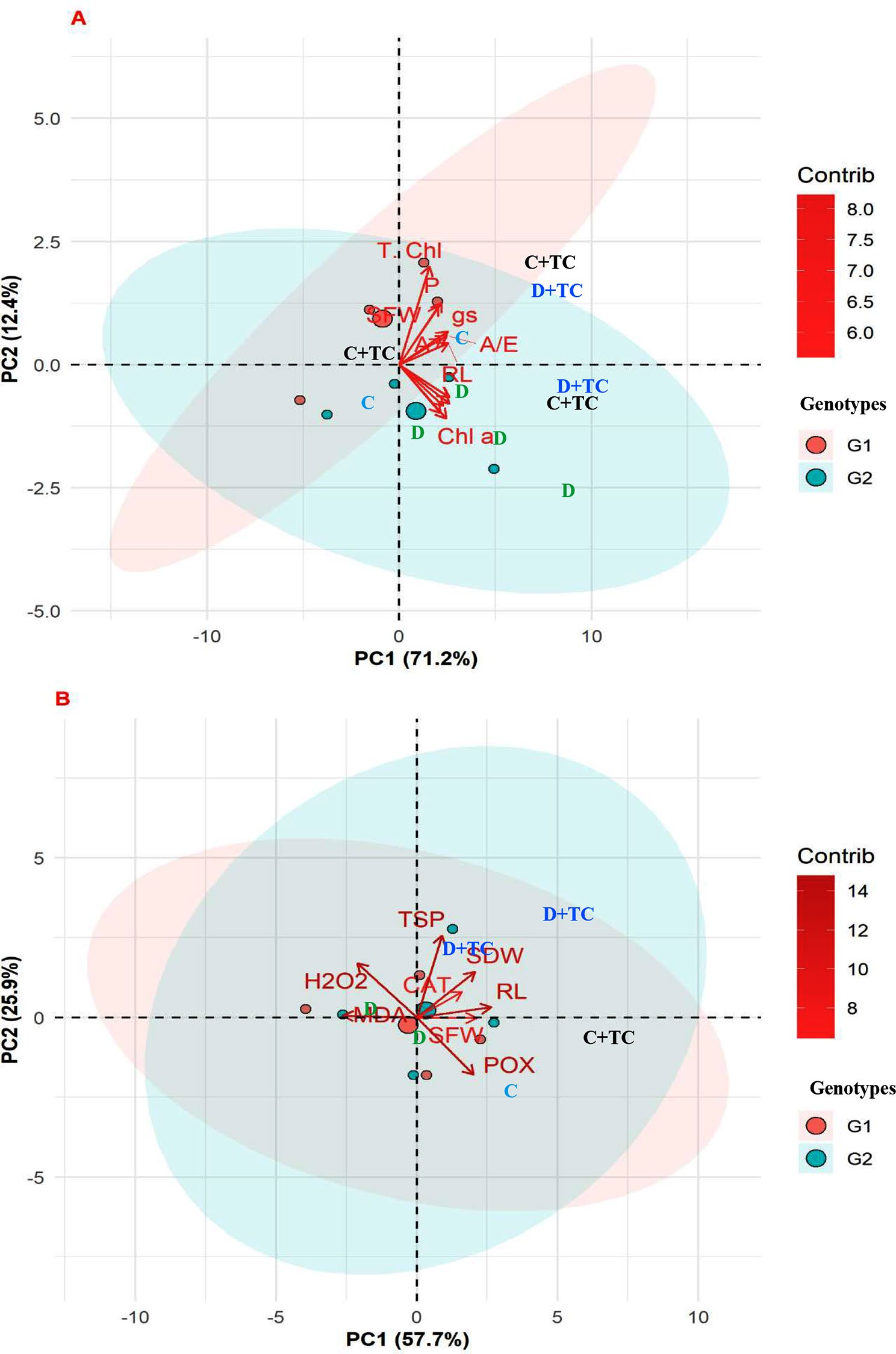
Fig. 2 (A) PCA biplot for A)the chlorophyll contents, growth and photosynthetic traits
The Pearson correlation analysis revealed significant positive correlations among growth, photosynthetic performance, ion content, osmolytes, and antioxidant traits. Shoot fresh and dry weights (SFW, SDW) were strongly associated with photosynthetic parameters (A, A/E, E, and gs), which were negatively correlated with oxidative stress markers (H₂O₂ and MDA), suggesting enhanced drought tolerance. Chlorophyll a and b also showed positive correlations with key ions (K⁺, PO₄³⁻, Ca²⁺), and negative correlations with MDA and H₂O₂, indicating a protective role of ionic balance in maintaining pigment levels under drought stress.
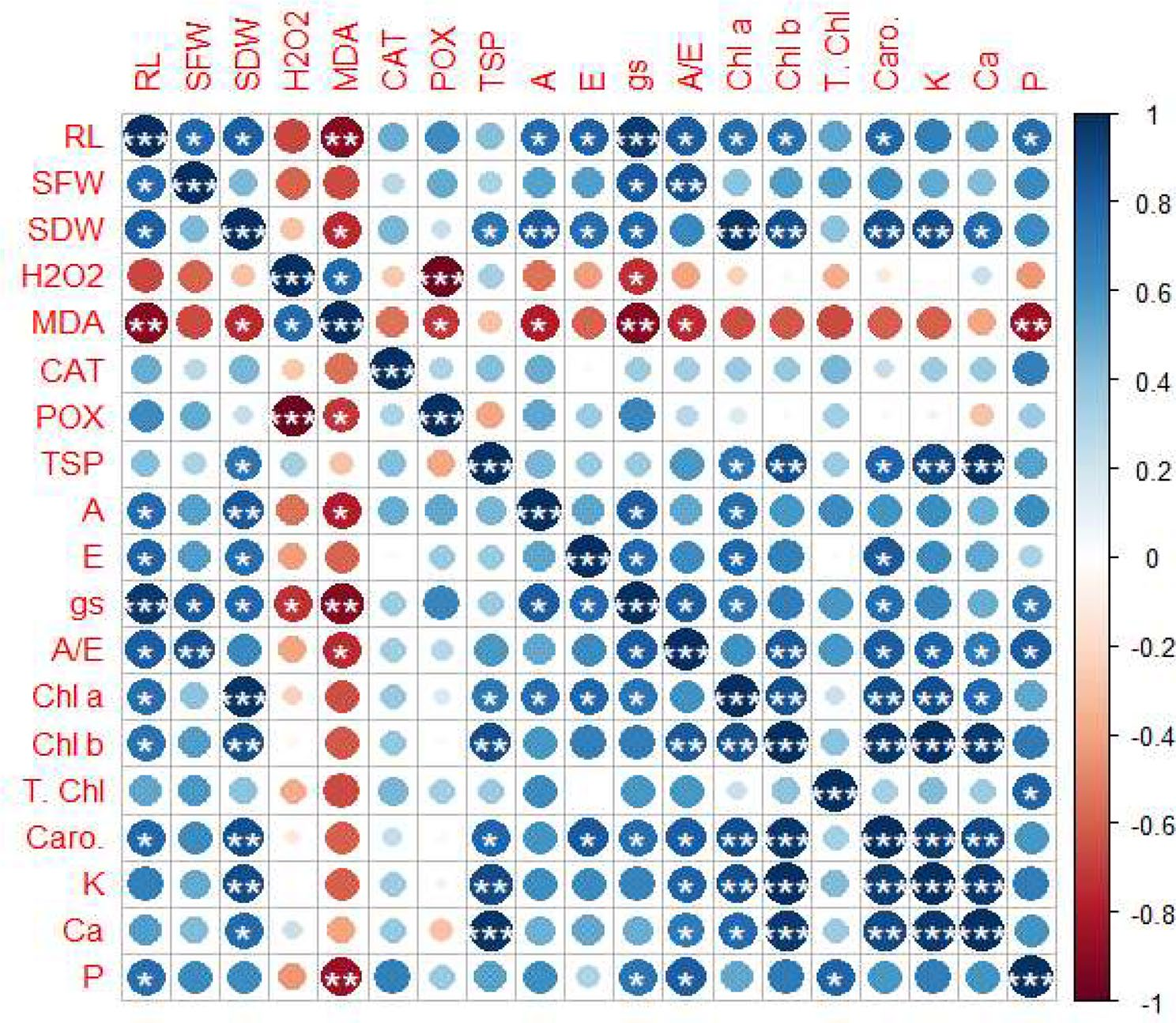
Fig. 3 The Pearson correlation matrix illustrates the relationships among all studied traits in two radish genotypes under different treatments
A clustered heat map (Fig. 4) showed the responses of two radish genotypes under normal and drought conditions. Under drought (T2), genotype G2 was negatively associated with key traits such as antioxidant enzymes, chlorophyll content, photosynthesis, ions, growth, and gas exchange, while genotype G1 showed a strong positive association with these traits. Genotype G2 was positively linked with most traits except MDA and POX. Significant grouping of traits and genotypes under different treatments was observed. Hierarchical cluster analysis (Fig. 5) revealed that genotypes G1 and G2 clustered closely under drought (T2) and drought plus α-Tocopherol (T3) treatments, while both genotypes also clustered together under control (T0) and control plus α-Tocopherol (T1) treatments, indicating similar responses within treatment groups.
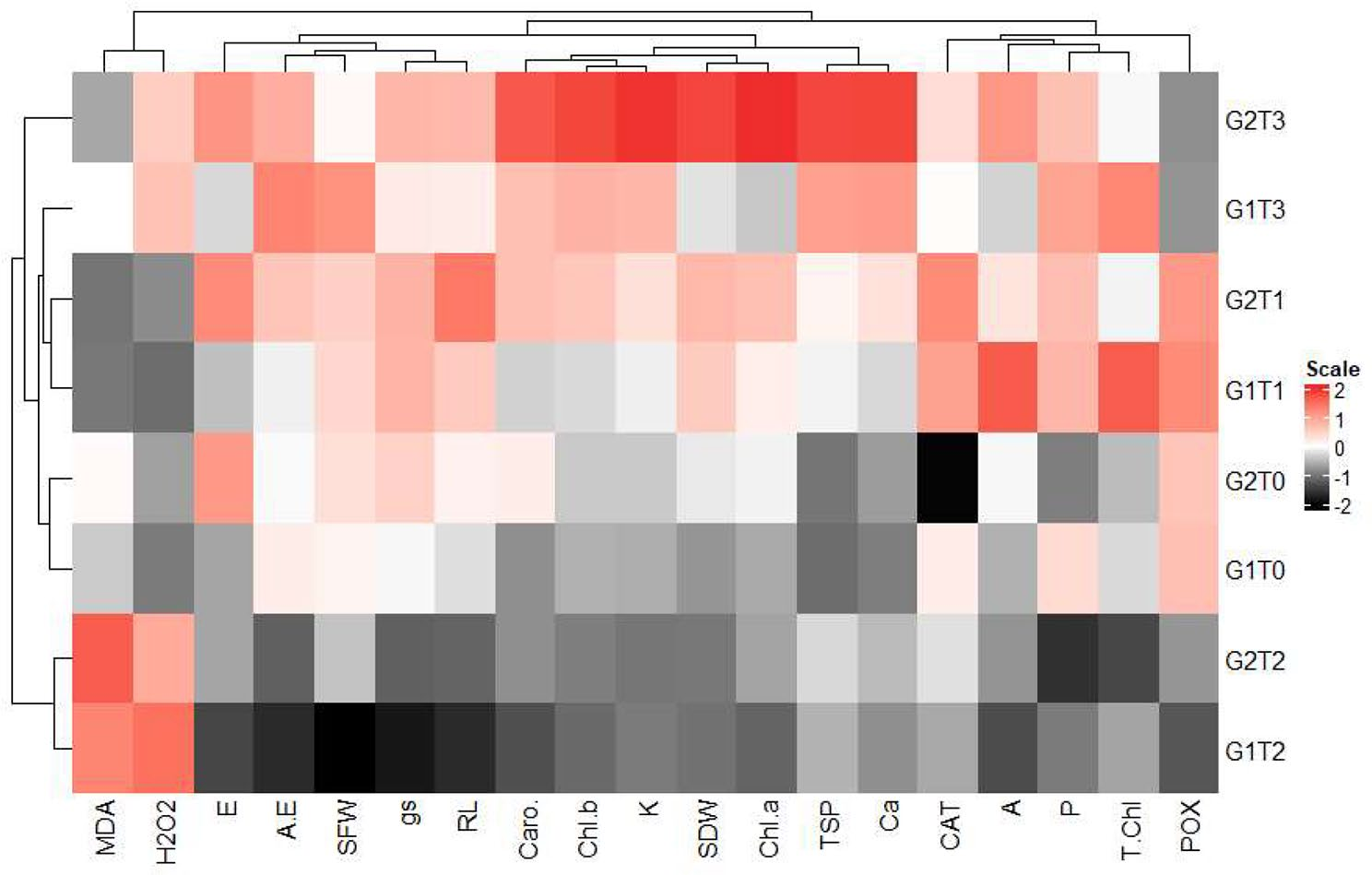
Fig. 4 Heatmap showing the grouping of treatments and genotypes under drought and normal conditions.
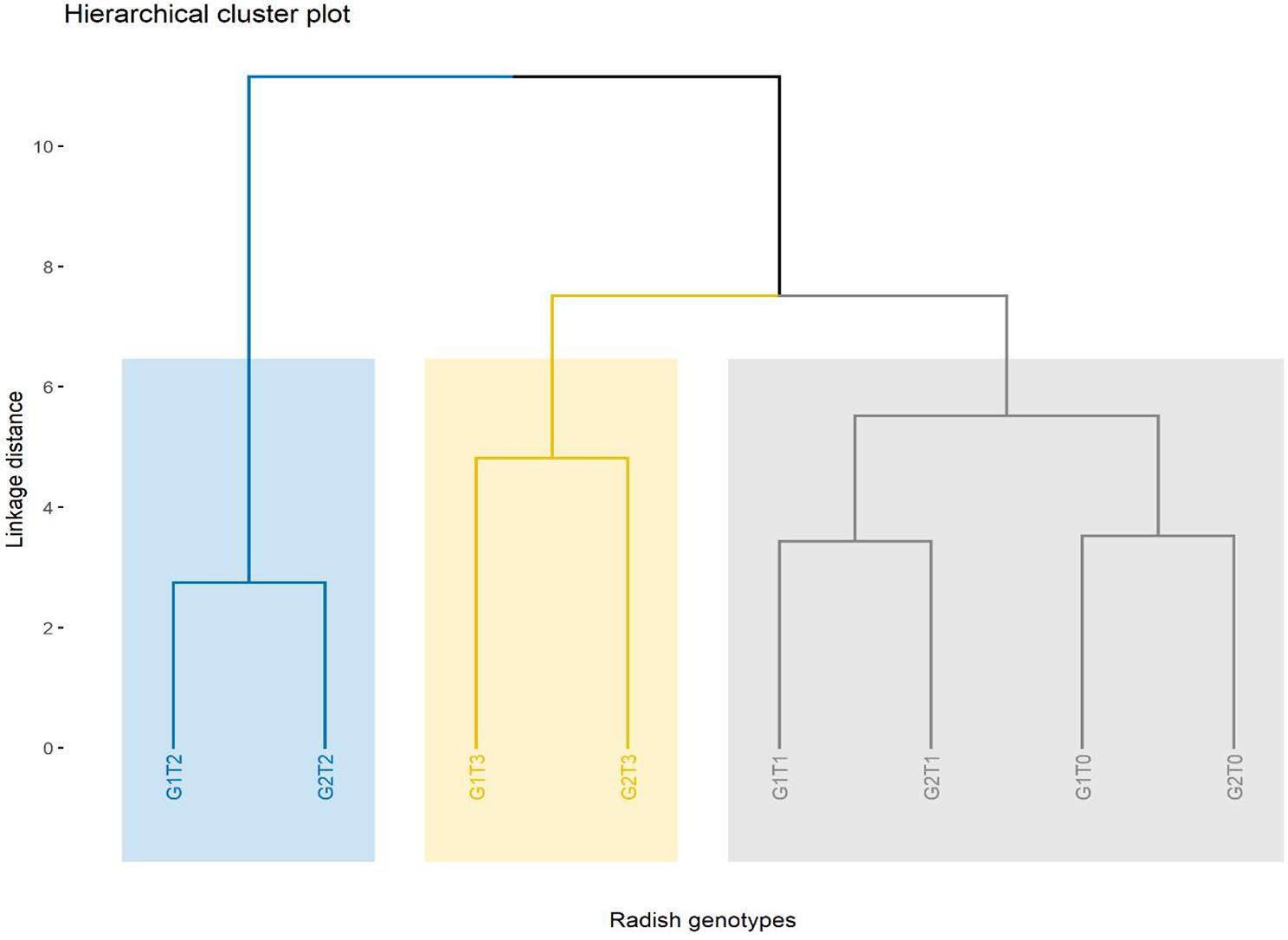
Fig. 5 Hierarchical cluster plot among two radish genotypes under drought and tocopherol applications.
In summary, α-tocopherol (α-Toc) application, alone or combined, significantly improved growth, photosynthetic pigment accumulation, and photosynthetic efficiency under drought, especially in the Early Milo (G2) genotype. α-Toc enhanced antioxidant enzyme activities (CAT, POX) to reduce oxidative damage and lipid peroxidation. It also increased total soluble proteins for osmotic adjustment and boosted inorganic ion levels to maintain cellular water balance. These findings suggest α-Toc can economically improve radish drought tolerance, though further molecular studies are needed to clarify its protective mechanisms.
Related News
2025-06-04
Functional study of plant hormone transporters using a heterologous system
2025-05-29
2025-05-27
2025-05-22
2025-05-20
2025-05-16
2025-05-13
2025-05-09



